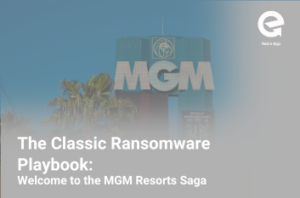 . . . said no employee ever. Have you ever heard an employee or co-worker say, “I wish our company would stop communicating with me?” Not likely, right?
. . . said no employee ever. Have you ever heard an employee or co-worker say, “I wish our company would stop communicating with me?” Not likely, right?
Instead, employees praise companies that do keep them in the loop in a timely and respectable manner, and gripe and moan when they feel like they were the last to know an important piece of information. How can we break this cycle?
Quite simply, by communicating with employees about what they want to know and in a manner that informs them when and where they are most. Mobile communications has the potential to break the cycle of misinformed and disengaged employees.
As consumers we are living in an unprecedented time of electronic exposure providing marketers, spammers, social platforms, banner ads, retailers, family, partners and employers unfettered access to our inboxes, devices, media outlets and desktops. Yes, all at the same time…
But guess what? Most all consumers are also “employees”. If companies invest so heavily and mightily in marketing, and they truly believe marketing will influence sales, they should equally be investing in internal marketing, known commonly as “employee engagement” and “employee marketing”.
In a Harvard Business Review article, The Silent Killer of Big Companies, detailed the devastating losses that large corporations are suffering due to a lack of clear and concise internal and employee communications. Successful companies are engaging employees by adopting communication methods that bring them closer to employees, promote dialogue, and raise the employee’s level of the company’s strategic initiatives.
The question then is not ‘Why’ but ‘How’ to help organizations ensure their people talk with each other, especially those organizations that have a large mobile-based employee population. Email has been the staple of communication for many decades. However, we are more mobile than ever before and our email inboxes tend to be cluttered with many senders, large amounts of content, and more reply all’s than we can manage.
Many organizations do not provide a corporate email address to all of their employees – especially the non-desk worker and the ‘mobile’ population. Such as restaurant managers and servers, retail associates, manufacturing line workers, hotel staff, and healthcare operations.
The benefits of employee engagement are great as documented in Gallup’s State of the Global Workplace research. More specifically, employees are your brand ambassadors. If an employee doesn’t represent your brand well, then your brand and products will lose value. However, the employer’s biggest challenge is getting their message of direction, mission, focus, and maybe even change through all of this messaging clutter.
So how do we clear a path to employees, especially for the non-desk employee, who operate and interact mostly through their mobile device? A single device where they are continually inundated with information from a wide variety of sources – all, simultaneously, being pushed to them in mass.
Two of our clients are using mobile push notifications to send specific and actionable messages with distinct time frames to their employees.
First, a restaurant chain operating over 300 franchises identified three employee channels necessary to reach their customers – corporate to the regional managers, regional managers to store managers, and store managers to their staff. The store manager can increase sales by simply communicating to his evening shift two tips for selling a high margin food or drink.
Second, a home hospice organization that manages health communities and home care nurses identified an employee channel to meet their mission of being compassionately committed to excellence in customer service. The organization director has reduced response times with the ability to send patient health information via a HIPAA compliment messaging channel. Also, the staff can communicate directly and securely with each other to improve records completion.
The results of these two programs are employees that are better informed, focused and engaged. The employer’s specificity and timeliness in their communications results in a greater employee response rate to action-oriented messages. Employees that are engaged provide better customer service, increase retention, reduce turnover, drive repeat customers and ultimately, and increase your revenue.
Jonathan Erwin
Founder and CEO


